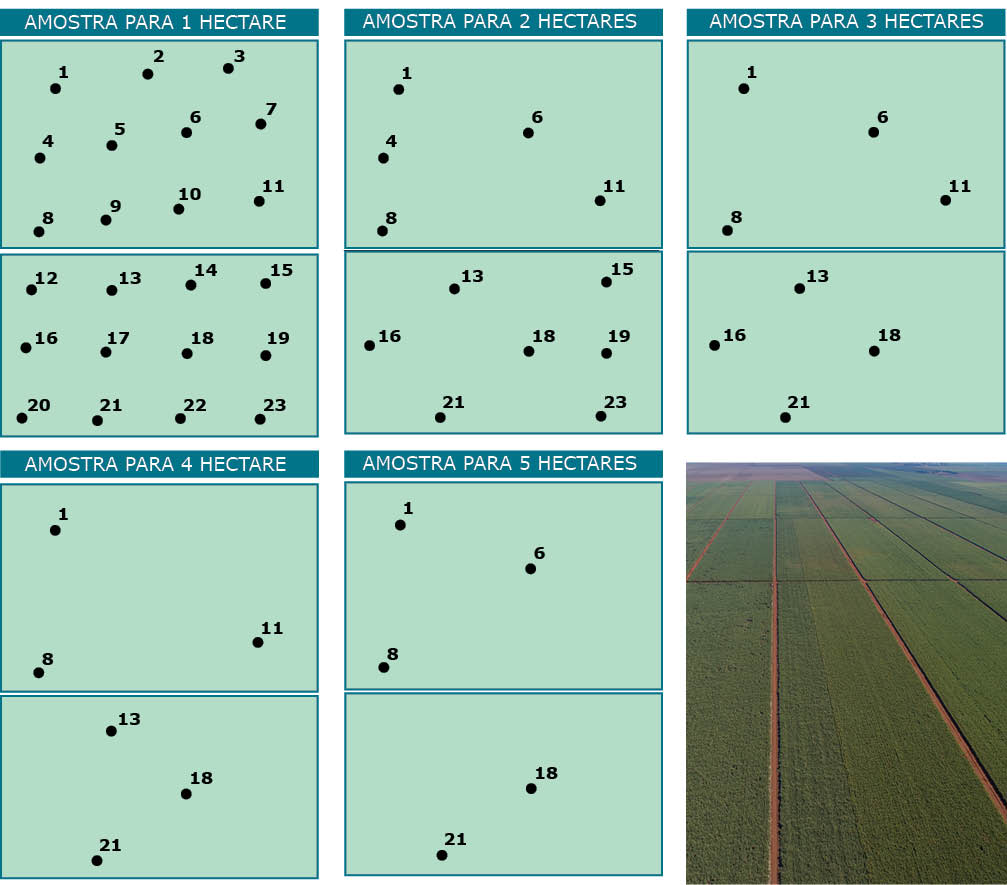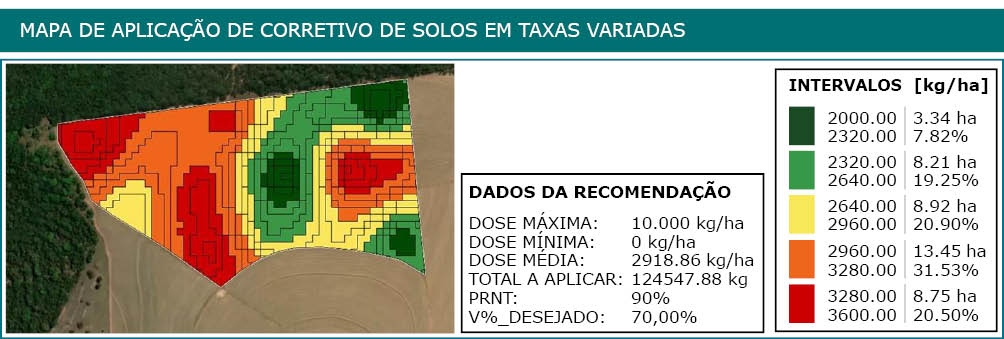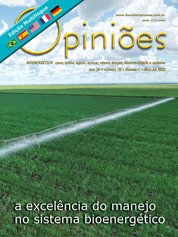Gustavo de Almeida Nogueira
Coordenador de Agricultura de Precisão da Copercana
OpAA76
Agricultura de precisão: o alicerce para a agricultura inteligente
Foi dada a largada para a safra 2023/24 na principal região produtora de cana e energia. Todas as equipes alinhadas, treinadas e capacitadas, com o mesmo objetivo: entregarem grandes resultados, como disse nosso eterno campeão Ayrton Senna, “na adversidade uns desistem enquanto outros batem recordes”.
Esta é a minha trigésima safra, ou seja, este ano completo 30 anos focado e dedicado em socializar o conhecimento junto aos produtores de cana. Iniciei minha carreira profissional em uma das maiores associações de produtores de cana do Brasil, a Canaoeste, e, nesse início, tive o privilégio de ter como meu superior e mentor o nosso saudoso Manoel Carlos de Azevedo Ortolan, mais conhecido como Maneco, que sempre defendeu de forma pura os interesses dos produtores, com conhecimento técnico, convicção e focado em Inovação.
Sabemos que inovar é criar algo novo, é introduzir novidades, renovar. Inovar é sinônimo de mudar ou melhorar algo já existente. Hoje, temos a oportunidade que, em vez de começar a criar uma nova tecnologia do zero, podemos utilizar as tecnologias existentes e encontrar novas soluções, o que é mais rápido e eficiente na resolução dos problemas.
Inovação combina com boa gestão e usar com inteligência esse “pacote” tecnológico com o objetivo de idealizar um futuro mais sustentável na produção de alimentos. Com a expansão da cultura canavieira, que avançou sobre novas áreas em ambientes edafoclimáticos com diferentes potenciais de produção, em que esse potencial é dado pela interação entre planta, solo e clima, atingir ou não esse potencial depende das práticas de manejo agronômico e da qualidade das operações agrícolas.
O grande desafio dessa expansão é agir com responsabilidade técnica, social, econômica e ambiental. Nesse contexto, fazer o mapeamento do solo e identificar os ambientes de produção é fundamental para a alocação correta das variedades de cana. Dentro desse contexto, a Agricultura de Precisão – AP, nos permite o gerenciamento localizado dos cultivos e desponta como promessa no cenário agrícola brasileiro.
A Agricultura de Precisão pode ser definida como um conjunto de ferramentas e tecnologias que permitem ao produtor o gerenciamento localizado do solo e de suas lavouras, aprimorando todo o sistema produtivo a fim de melhorar o retorno econômico.
Os primeiros relatos acadêmicos comprovando a variabilidade espacial dos atributos do solo dentro de um talhão datam da década de 1920. No Brasil, a Agricultura de Precisão foi introduzida em meados da década de 1990, mas os avanços significativos só aconteceram a partir de 2000, com a difusão do uso do GPS – Sistema de Posicionamento Global.
Sendo assim, uma nova fase da Agricultura de Precisão avançou, facilitando a gestão dos processos, com informações em tempo real, relatórios detalhados e incorporação das tecnologias embarcadas nas máquinas agrícolas. Na agricultura convencional, o manejo da fertilidade do solo baseia-se apenas nos teores médios dos nutrientes. Ou seja, são realizadas poucas amostras de solo para o planejamento do uso de fertilizantes e corretivos. Dessa maneira, a análise química do solo expressa um único resultado mediano para todo o talhão, desconsiderando a presença de variabilidade espacial e supondo que as propriedades do solo são semelhantes em toda a área.
Dentro deste contexto, os mapas de variabilidade das características do solo são grandes aliados do produtor, pois reúnem as informações sobre a localização e as quantidades ou necessidades de insumos em cada ponto do talhão, dando suporte às tomadas de decisão mais acertadas. O conhecimento desta variabilidade torna-se fundamental para o manejo localizado dentro do talhão, otimizando as aplicações localizadas de corretivos e fertilizantes.
Devido a essa importância, a Copercana já trabalha há alguns anos na aquisição de equipamentos (caminhões) com tecnologia embarcada que realizam a aplicação dos corretivos em taxa variada. No Laboratório de Solo da Copercana, há constantes investimentos na aquisição de equipamentos e aprimoramento constante de sua equipe visando sua evolução na prestação do serviço, obedecendo às metodologias relacionadas aos conceitos da Agricultura de Precisão.
Dessa maneira, nasceu a Copercana Agricultura de Precisão, que oferece aos seus cooperados os serviços de mapeamento e coleta georreferenciada de amostras do solo, análise laboratorial, elaboração do mapa de aplicação e distribuição do corretivo em taxa variável.

É um primeiro, mas firme, passo da cooperativa para proporcionar aos cooperados o que há de novo em termos de precisão, sem a necessidade de grandes investimentos.
A técnica gera uma grade regular virtual sobre o talhão por meio de um sistema de informação geográfica (SIG), dividindo o campo em polígonos regulares (quadrados ou retângulos).
Dentro de cada área, é gerado um ponto amostral que pode estar localizado no centro. As coordenadas dos pontos são transferidas para um receptor GNSS de navegação que guiará a equipe de coleta até cada local de amostragem.
A execução do serviço é realizada com um quadriciclo Honda Fourtrax 4x4 TRX 420, equipado com perfurador SACI com regulagem na altura das brocas de coleta, onde o operador trabalha com um GPS acrescido de um software de campo que serve como guia para levantamento e conferência das coordenadas georreferenciadas.
Após a definição do grid amostral, que pode variar de um ponto por hectare até um ponto a cada cinco hectares, são retiradas amostras em duas profundidades, de 0-25 e a outra em 25-50 centímetros, formadas pelo material extraído de oito a dez subamostras, o que compõe uma amostra composta para cada profundidade. A qualidade da amostragem de solo é fator determinante e está diretamente relacionada à qualidade no restante do ciclo.
Definição do Grid Amostral:
As amostras coletadas são encaminhadas para o Laboratório de Solos da Copercana, acreditado com a ISO 17025 (que atesta sua alta qualidade), o qual, através de sua estrutura de última geração, utiliza a metodologia do IAC em seus ensaios.
A relação do resultado dos ensaios de fertilidade com as informações georreferenciadas cria o mapa de recomendação, expressão digital da necessidade de correção do solo, o que faz parte do escopo dos serviços de Agricultura de Precisão executados pela Copercana.
Assim, os mapas de variabilidade espacial representam a digitalização das características do solo em pequena escala, apresentando precisão na quantidade dos atributos analisados e em sua localização, ou seja, indicam a quantidade de corretivo que realmente o solo necessita, no local adequado.


Tanto na calagem como na gessagem, as doses são discriminadas por cores diferentes e encontradas através do intervalo de dose máxima e mínima com o V% desejado. Com o cálculo, o produtor sabe a quantidade total que vai precisar, o percentual e o tamanho de cada intervalo de dose, como mostra a imagem abaixo.
Ao imputarmos o mapa no receptor dos caminhões que aplicam os corretivos em taxa variável, ele alterará a dose automaticamente cada vez que mudar a área de recomendação.
Todo ciclo se fecha com o trabalho agronômico especializado, que não fica apenas no âmbito da assessoria dos manejos, mas principalmente em apresentar os resultados e orientar o produtor cooperado na tomada das melhores decisões.
Normalmente, todos aqueles que buscam o desenvolvimento, sejam eles econômicos ou até mesmo profissionais, fixam suas expectativas apenas, ou principalmente, no objetivo final. Concordo que devemos e temos que buscar nossos objetivos, sem desprezar ou nos esquecermos de rever certos pensamentos, paradigmas, posturas e ações, pois não se conseguem novos resultados utilizando-se de velhas práticas. Cada ação tem uma reação e cada efeito tem a sua causa.
Contudo, o sucesso de nossa atividade é construído passo a passo, e cada um deles é imprescindível. Saibamos dar esses passos com sabedoria, dando o devido valor a cada aprendizado que a vida nos proporciona.
Encerro essas breves reflexões com uma frase de Paul Krugman: “Produtividade não é tudo, mas no longo prazo é quase tudo”.




